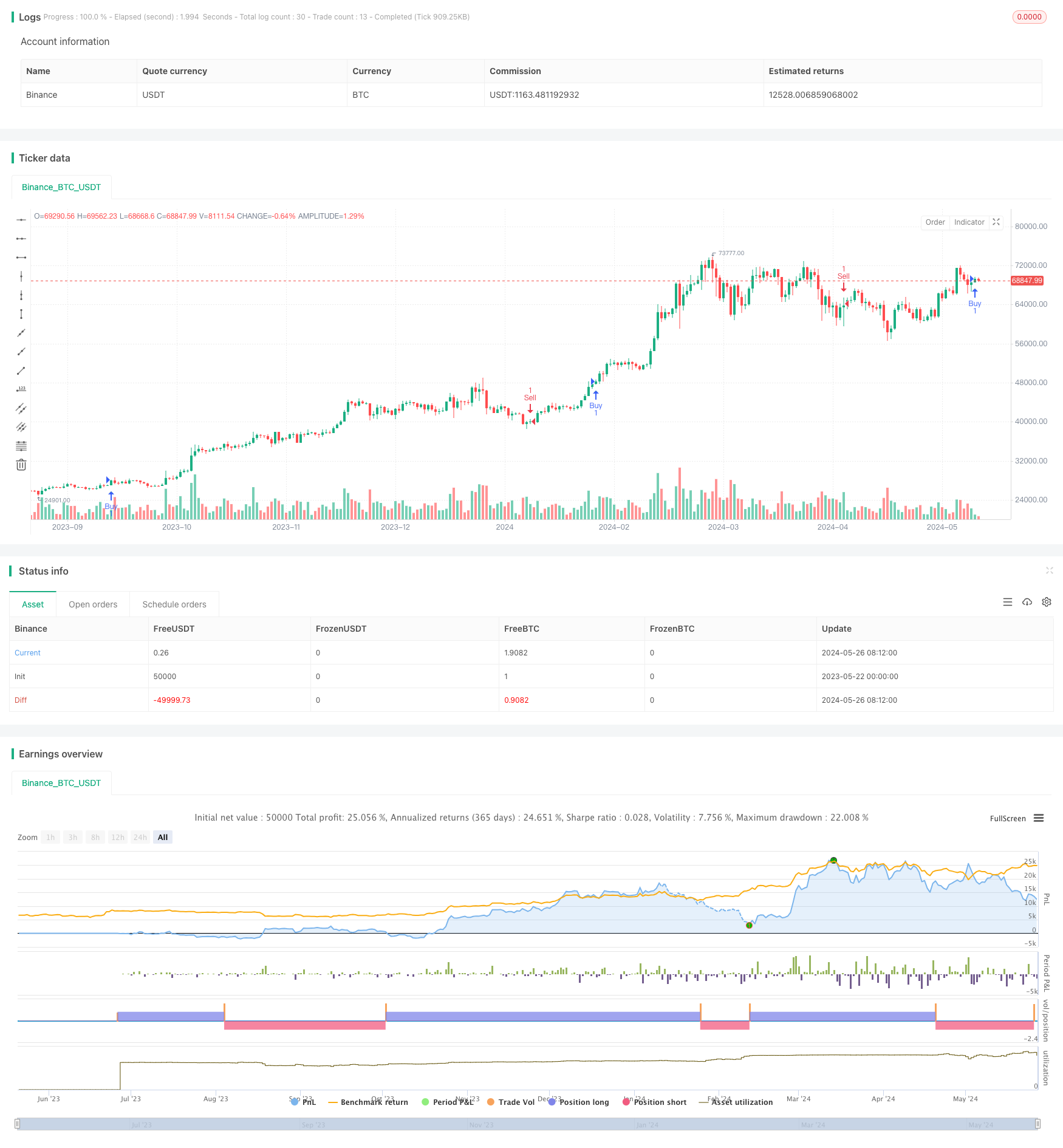
概述
该策略使用两条不同周期的移动平均线(MA)来产生交易信号。当短期MA从下向上穿过长期MA时,产生买入信号;当短期MA从上向下穿过长期MA时,产生卖出信号。这个策略的主要思路是利用MA的趋势跟踪特性,通过MA交叉来捕捉趋势的转变,从而进行交易。
策略原理
- 计算两条不同周期的移动平均线(MA),一条是短期MA,另一条是长期MA。
- 当短期MA从下向上穿过长期MA时,说明上涨趋势可能形成,产生买入信号。
- 当短期MA从上向下穿过长期MA时,说明下跌趋势可能形成,产生卖出信号。
- 根据买入和卖出信号进行交易,买入信号出现时开多仓,卖出信号出现时开空仓。
策略优势
- 简单易懂:该策略逻辑清晰,容易理解和实现。
- 趋势跟踪:通过MA交叉来捕捉趋势的转变,能够较好地适应不同的市场趋势。
- 参数灵活:可以根据不同的市场和时间周期,调整短期和长期MA的周期参数,以优化策略表现。
策略风险
- 震荡市:在震荡市场中,频繁的MA交叉可能导致许多虚假信号,从而产生较多的亏损交易。
- 趋势延迟:MA是滞后指标,因此在趋势转变初期,该策略可能会错过一部分利润。
- 参数优化:不同的参数设置会显著影响策略表现,参数优化需要大量的历史数据和计算资源。
策略优化方向
- 加入趋势过滤:在MA交叉产生信号后,可以用其他趋势指标(如MACD,DMI等)进行二次确认,以过滤掉一些虚假信号。
- 优化止盈止损:合理设置止盈止损位,可以在趋势延迟的情况下,尽量减少损失,让利润奔跑。
- 动态参数优化:根据不同的市场状态,动态调整MA周期参数,以适应当前的市场特点。
- 组合其他信号:将MA交叉信号与其他技术指标(如RSI,布林带等)相结合,形成更加可靠的交易信号。
总结
双均线交叉策略是一个简单易用的趋势跟踪策略,通过两条不同周期MA的交叉来捕捉趋势转变。该策略优点是逻辑清晰,信号明确,适用于趋势市场。但在震荡市中,该策略可能产生较多虚假信号和亏损交易。因此,在实际应用中,可以通过加入趋势过滤,优化止盈止损,动态参数优化以及与其他信号组合等方式,来改进策略的表现,提高其适应性和稳定性。
策略源码
/*backtest
start: 2023-05-22 00:00:00
end: 2024-05-27 00:00:00
period: 1d
basePeriod: 1h
exchanges: [{"eid":"Binance","currency":"BTC_USDT"}]
*/
//@version=5
strategy("Combined Strategy", overlay=true)
// Moving Averages Length Inputs
short_length = input.int(20, "Short MA Length")
long_length = input.int(50, "Long MA Length")
// Moving Averages
ma_short = ta.sma(close, short_length)
ma_long = ta.sma(close, long_length)
// Buy Condition (Moving Average Crossover)
buy_condition = ta.crossover(ma_short, ma_long)
plotshape(series=buy_condition, style=shape.triangleup, location=location.belowbar, color=color.green, size=size.small)
// Sell Condition (Moving Average Crossover)
sell_condition = ta.crossunder(ma_short, ma_long)
plotshape(series=sell_condition, style=shape.triangledown, location=location.abovebar, color=color.red, size=size.small)
// Strategy Entry and Exit
if (buy_condition)
strategy.entry("Buy", strategy.long)
if (sell_condition)
strategy.entry("Sell", strategy.short)
// Debug statements
if (buy_condition)
label.new(x=bar_index, y=low, text="Buy Signal", color=color.green, style=label.style_label_up)
if (sell_condition)
label.new(x=bar_index, y=high, text="Sell Signal", color=color.red, style=label.style_label_down)
相关推荐